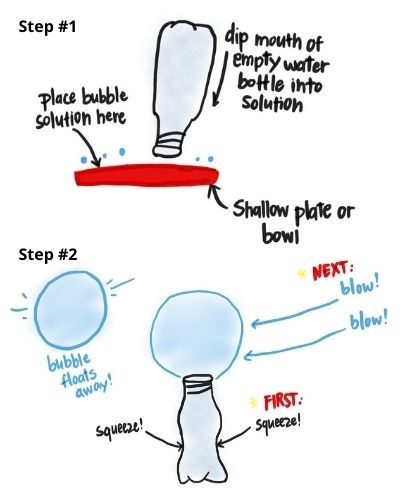Last updated: July 7, 2021
Article
Virtual Junior Ranger Summer Camp: Day 3—Kick Start to Summer

NPS Photo / C&O Canal NHP
Upcycling Activities
Get creative and repurpose items you can find around your house! Upcylcing is similar to recycling, except instead of tossing recylclable items into the blue bin, you find a new purpose for them.
Got plastic water bottles, newspaper, or cereal boxes collecting in your recycling bin? Flex your creativity skills and repurpose items lying around your house with these fun activities!
Create your own water bottle bubble wand, make a DIY Hummingbird feeder, build a newspaper fort, and create your nature crown for your new castle! Your imagination is the only limit. Make sure to find an adult to help you get started.
Connect with us on social media and share your summer camp adventure by using the hashtags #CanalKidsVJR or #CanalKidActivities.

NPS / Raisa Barrera
DIY Hummingbird Feeder
|
Build your own hummingbird feeder! Don't discard that empty plastic water bottle, instead follow the steps below to create a do-it-yourself hummingbird feeder.
|

NPS / Raisa Barrera
Water Bottle Bubble Wand
|
Don't have a bubble wand or bubble solution? No worries—we've got just the craft for you. Check out the steps below to get started. Supplies needed—(1) Empty water bottle, dish soap, water, shallow bowl or plate
|

NPS / Raisa Barrera
Newspaper Fort Building
|
Beat the heat! Have some fun using your imagination and build a newspaper fort indoors. With the help from an adult, check out the steps below to get started. As you create your fort, get creative and build your own design.
Extension—Get creative and change the design of your fort! How big can you make it? What shapes can you make? Bring a book under your fort and a flash light and enjoy your new reading den. |

DIY Nature Crowns
|
Has your parents ever asked you to help pull weeds in your yard or garden? Now you can help and instead of throwing away the dandelions, you can make your own nature crown! With the help of an adult, check out the steps below to get started.
|

DIY Wildflower Terrariums
|
Want to build your own little ecosystem and watch it thrive? This activity takes patience and the excitement to watch things grow. With the help of an adult, check out the steps to get started below.
|
